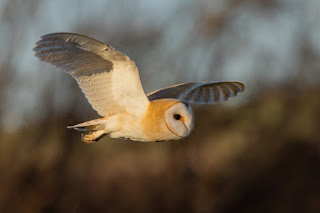Expectation levels begin to rise by the last week of March along the south coast, with the imminent arrival of common Spring migrants, departing winter visitors and continuing seabird passage. There is always the chance of an early surprise and this week certainly delivered.
The warmer weather also produced the first reports of Hummingbird Hawkmoth in an East Worthing garden and Dotted Beeflies were reported from Cissbury.
Seawatching
It was something of a struggle for birders watching the sea this week with poor visibility hampering their efforts for much of the week. However Brents continued to trickle through in small numbers with 150e (23rd), 93e (26th) and 43e (30th). A few Wigeon were also noted with 20e and 30e on 23rd and 28th respectively.
After early reports of 20+ birds heading east from Selsey on Sunday 23rd, four Little Gulls were picked up from Marine Gardens amongst Black-headed Gulls and another was seen there the following day (R Ives). This can be a tricky species to catch up with in some years, so this is a good early local record.
A single Velvet Scoter amongst a flock of nine Common Scoter on Sunday 30th past East Worthing was another welcome addition to the year’s seabird list.
Summer Arrivals
A very early male Redstart was found on Sompting Brooks on Thursday 28th, which mirrors a similar early record of a female at the same location last year.
A Swallow flying low over Cissbury on Saturday 29th March could be the first locally reported bird of the year, unless anyone has an earlier sighting. On the 30th another was seen flying over a Sompting garden whilst three Sand Martins were seen flying in off sea.
Single Wheatears were reported from Marine Gardens (24th), Goring Gap (25th and 28th) and two birds near the pier (30th), those that have yet to record this classic Spring migrant will surely have more opportunities in early April.
There was a clear arrival of singing Willow Warblers with birds heard from Ferring Country Centre (27th), three birds at Ferring Rife (28th) and four birds together on the edge of Sompting (29th) and one still present along Ferring Rife (30th).
Two White Wagtails, a migrant continental form of our resident Pied Wagtail, were present in horse paddocks along Ferring Rife on 28th with another bird briefly on 30th. Meadow Pipits were also on the move with 72 heading north over Worthing beach on Sunday 30th.
Wintering Departures.
Perhaps the most interesting news of the week was the nocturnal movements of Redwing heard calling over Ferring and East Worthing on Thursday 27th March. Given the paucity of local records this winter they must have been moving from further west or continental birds. Three grounded Redwing and two Fieldfare were seen at Ferring Rife on Saturday 29th March.
Another good local sighting was a Short-eared Owl seen heading inland over South Street on Friday 28th, which was presumably a bird migrating from the continent back to its upland breeding territory (R Ives).
Three Jack Snipe along Ferring Rife (26th) were clear passage birds as none had overwintered at this site.
Roll on April.










